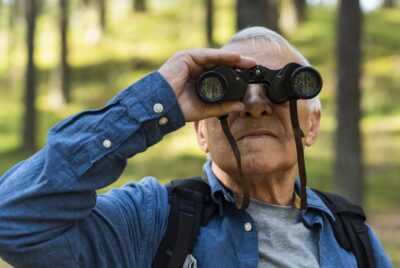The Complexities of Bird Behavior and Interaction with Humans
Humans and birds share a surprising intimacy in urban environments. This interaction is far from simple, involving complex bird behavior and dynamic interactions with humans. This exploration delves into how birds adapt to the concrete jungle, navigate human activity, and even benefit from our presence. Understanding these interactions is crucial for ensuring a sustainable coexistence in our shared urban spaces.

Understanding Bird Behavior
There is more to the behaviors of birds than meets the eye. To truly comprehend our feathered friends, we must first define some key terms:
Bird behavior refers to everything birds do to carry out their lives, such as finding shelter, finding food, reproducing, and interacting with other birds.
Wild birds are those living in natural, undisturbed habitats independent of human interaction. This includes birds residing in forests, grasslands, mountains, and wetlands.
Bird species describe the various taxonomical groups birds are classified into, such as ravens, sparrows, herons, and warblers.
Urban birds have adapted to live near human settlements like cities, suburbs, and parks. Examples include pigeons, house sparrows, and European starlings.
Prey species define birds that are hunted by predators for food. Traits like camouflage colors and surveillance behaviors help these birds evade danger.
Nesting sites refer to the specific structures or locations where birds lay their eggs and raise young, such as tree cavities, cliff ledges, and grassy nests.
Communication plays a key role in bird behavior. Through vocalizations, birds produce different sounds like songs, calls, and alarms to attract mates, defend territories, and warn of threats. Body language involves visual displays and postures that indicate emotions and intentions. Visual cues allow for recognition between members of the same species through distinctive plumage patterns.
Like any animal, bird behavior depends greatly on the surrounding environment and habitat. However, it also varies among different species and even at the individual level. For example, predation risk may prompt wariness in one bird but curiosity in another. Understanding these factors is important for appreciating the diversity of avian life.
Birds in Our World
The relationship between birds and humans is complex depending on their habitat and environment. There are some key groupings:
Urban Birds
Living near human settlements presents both challenges and benefits for birds. On the one hand, urban areas bring risks like collisions with buildings, exposure to pollutants, and competition from other species that also thrive in cities like pigeons and gulls. However, urban greenspaces can provide supplementary resources and nest sites that help some bird populations.
Often referred to as “city birds”, common species like European starlings, house sparrows, and rock pigeons have adapted well to urbanization. Other examples include northern mockingbirds, house finches, and American robins—birds known to nest on human-built structures. While urbanization reduces natural habitat, these resilient birds demonstrate how avian life finds a way in human-dominated environments.
Wild Birds

In contrast to city birds, wild birds inhabit natural landscapes with minimal human interaction and development. These include various forest bird species like woodpeckers, warblers, and thrushes living among the trees. Grassland birds such as meadowlarks, quail, and grasshopper sparrows populate open plains and prairies. Meanwhile, wetland birds such as herons, egrets, and waterfowl depend on marshes and other wet environments.
With human population growth, wild birds face habitat loss and fragmentation posing severe threats. Conservation efforts aim to protect these areas and preserve routes for migration. Individuals can support such work through donations, volunteering, practicing environmental stewardship on private land, and avoiding harmful activities like poisoning or disrupting nests.
Pet Birds
Just like other animals, most birds live freely. Studies show that while people in many parts of the world feed birds in their backyards, it is often due to a desire to help wildlife or to connect with nature. However, many species of birds have been intentionally domesticated by humans as pets as they tend to enjoy pet keeping.
Budgerigars (parakeets), cockatiels, and canaries dominate the pet bird market and other pet stores for their small sizes and charming behaviors. However, keeping wild-caught birds involves ethical challenges and difficult needs. Responsible owners provide stimulus, healthy diets, safe living conditions, and veterinary care tailored to the natural history of their particular pet bird species.
Other than these species, parrots are also among the top favorites of bird owners. This is primarily due to their ability to mimic human speech and perhaps thereby reduce stress. In anthropological perspective, parrots are now treated by humans as family members just like their other pets. People tend to call them more particularly as “feathered kids” or FIDS.
Also read: Where Backyard Birds Go at Night?

The Dance Between Humans and Birds
The relationship between birds and humans is complex, involving both positive and negative interactions.
Positive Interactions
While they can sometimes be seen as pests, birds also provide many benefits to human populations. For example, birds aid in natural pest control by consuming insects. Pollinator species like hummingbirds support plant life that produces food and medicine. Beyond material gains, simply watching and learning about birds brings immense joy and mental wellness to people of all backgrounds.
Activities like birdwatching and citizen science have flourished as ways to better understand avian life while helping conservation. Projects instruct participants to identify birds, monitor nests, and track migration routes – data used by scientists investigating threats and how to combat them. This shows how human interest can directly assist the protection of avian habitats when channeled into initiatives focused on education.
Negative Interactions
Of course, humans and birds do not always see eye to eye. Some species are considered crop pests that can damage economically important botanical products. Pigeons, house sparrows, and European starlings are three of the most known pest species.
Noise pollution from vehicles and other machinery disrupts bird communication and causes behavioral stresses. Predation on livestock or pet animals causes conflicts for farmers and pet owners in some cases as well, as they become prey animals to these birds.
Meanwhile, exotic invasive bird species brought to new areas without natural controls threaten native populations through competition for resources and disease transmission. In cities, dropped food left out for birds can spoil and spread illness among individuals gathering in artificially high densities not found in natural settings. For this very reason, they are deemed invasive species.
Proper management of these negative interactions seeks humane solutions through exclusion techniques, habitat modification, or limited culling to protect human livelihoods or other species’ survival when needed. Further, addressing root problems like pollution and unchecked foreign introductions prevents serious issues from arising.
Impact on Bird Behavior
While birds have shown resilience in adapting to human-dominated landscapes, our presence does influence their natural behavioral patterns. Understandably so because human activity also affects them. Human presence alone can induce fear most likely in any animal. Even some human behaviors discourage birds from being anywhere near them, considering birds see humans as predators.
Some key examples and among several factors to consider:
- Noise pollution from vehicles, construction, and other sources disrupts birds’ ability to communicate through songs and calls vital for mating and territory defense. Chronic noise stress negatively impacts health, leading some bird populations to avoid noisier areas.
- Habitat loss and fragmentation from agriculture, urbanization, and other land conversion separate food sources from nesting/roosting places. This forces birds to fly greater distances, increasing predation risk and caloric expenditure just to carry out basic life tasks.
- Building collisions especially in cities pose dangers, as glass and glare are invisible barriers that confused migrant birds following routes may fly into. Estimates suggest a billion bird deaths annually from colliding with windows in North America alone.
- Light pollution during migration periods disorients some species that use star patterns for navigation at night. Attracted to light beacons, exhausted migrants have been known to circle aimlessly until they drop from the sky.
- Climate change shifts seasonal cycles birds rely on for nesting and availability of food sources. Later springs or warmer winters disrupt delicate timing that bird life has evolved to over millennia. Range changes may leave certain populations vulnerable.
However, all is not lost. Mitigation efforts like turning off unnecessary lights during migration seasons, using bird-friendly glass, and preserving and expanding natural areas can help birds cope with anthropogenic disturbances. Further, environmental education fosters greater awareness of how everyday actions impact avian neighbors, empowering communities to apply small solutions collectively for large impact.
Also read: Understanding Bird Behavior in Rain and at Night
Conclusion
Urban birds like pigeons, sparrows, and starlings thrive through adaptability. Their success living among cities and humans results from traits enabling dietary flexibility, varied nesting, long lifespans, and aggressive temperaments.
While human activities impact habitats, awareness grows of minimizing harm. Conserving green spaces supports biodiversity within urban constraints. Simple actions that nourish wildlife, from limiting light pollution to providing natural feeding areas, benefit both feathered and non-feathered residents when widely adopted.
A philosophy of respectful coexistence values open-minded learning. Understanding birds and their needs better allows peaceful togetherness, now and for generations inhabiting shared urban ecosystems yet unseen. Their resilient dances among buildings as in forests symbolize nature’s persistence where people live and work side by side.




